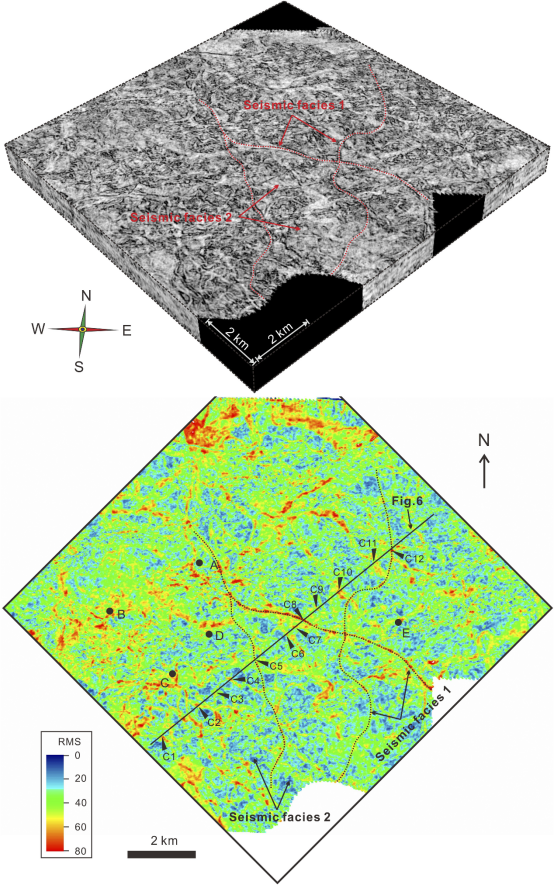“Seismic geomorphology and sedimentology of a fluvial dominated delta: Implications for the Neogene reservoirs, offshore Bohai Bay Basin, China” is published in AAPG Bulletin (2019) 103 (10): 2399-2420. It is an achievement of associate professor XU Shang’s team from the Key Laboratory of Tectonics and Petroleum Resources. XU is the first author.
Fluvial-dominated deltas are common along modern and ancient coasts and act as important hydrocarbon reservoirs. In this paper, an integration of high-resolution three-dimensional seismic, well log, and core data are employed to investigate the seismic geomorphology, depositional facies, reservoir types, and controlling factors of fluvial-dominated delta deposition in the lower segment of the Minghuazheng Formation (N1mL), Bohai Bay Basin, China. Three typical seismic facies and seismic geomorphologic units are identified. Seismic facies 1 displays discrete high-amplitude reflection and a distinct U-shape incision. In plan form, this seismic facies shows a linear, dendritic, and sinuous morphology with high root-mean-square amplitudes. Seismic facies 2 occurs interspersed with seismic facies 1 and shows low-frequency and low-amplitude reflection. Seismic facies 3 shows a continuous high-amplitude reflection and uniform sheet-like morphology covering more than 10 km2 (>3.86 mi2). The N1mL was primarily deposited in the upper delta plain, lower delta plain, and delta front environments and is dominated by three major facies types: (1) distributary channel (seismic facies 1), (2) interdistributary bay (seismic facies 2), and (3) sheet sand (seismic facies 3). Among them, the distributary channel sandstones and sheet sandstones are the major reservoirs in the N1mL. Fluvial processes and lake level cycles were important factors in the development and distribution of reservoirs and traps in fluvial-dominated delta systems. Integration of the seismic geomorphology and a modern geomorphology investigation provide an effective way to predict the sandstone reservoirs and traps in fluvial-dominated delta systems.

Figure. Seismic geomorphology of the top surface of the lowstand system tract interface. Note the linear, dendritic, and sinuous morphology with high root-mean-square (RMS) amplitudes. C1–C12 = channel 1–channel 12.
Full Text: https://pubs.geoscienceworld.org/aapgbull/article/103/10/2399/573576/Seismic-geomorphology-and-sedimentology-of-a